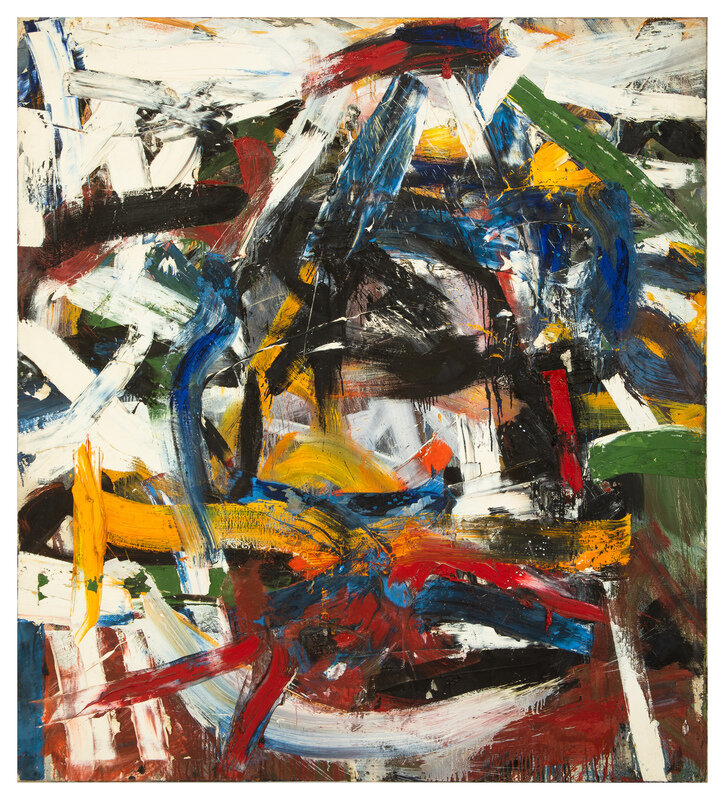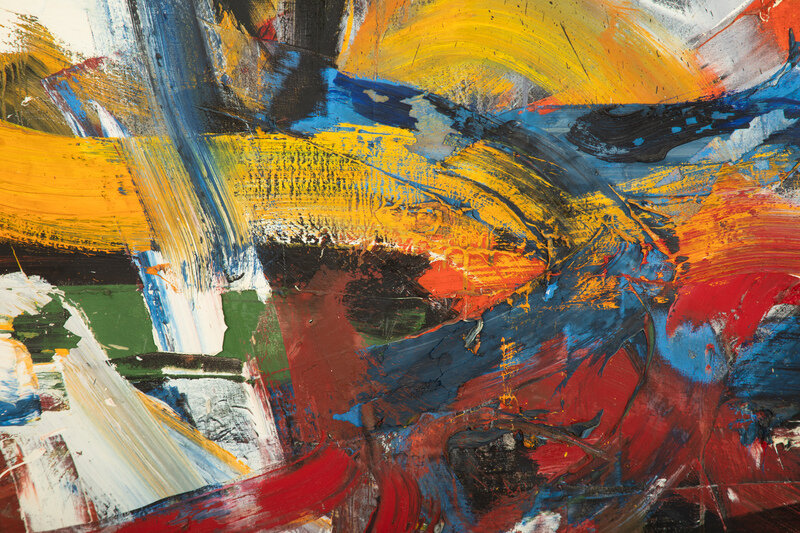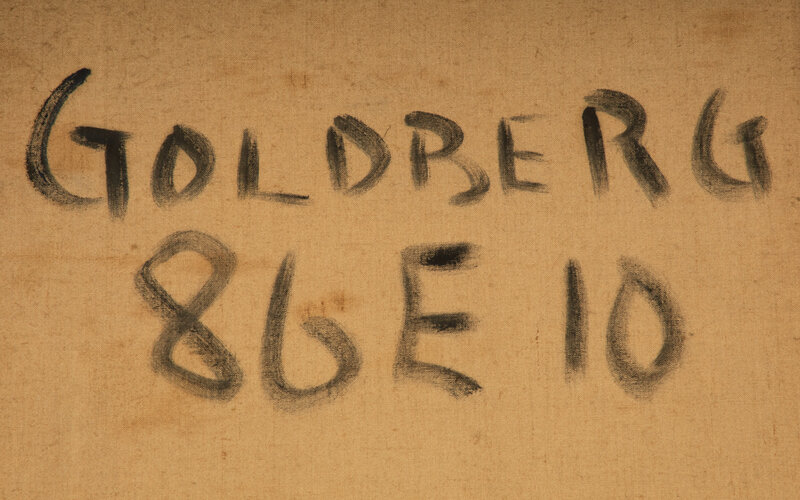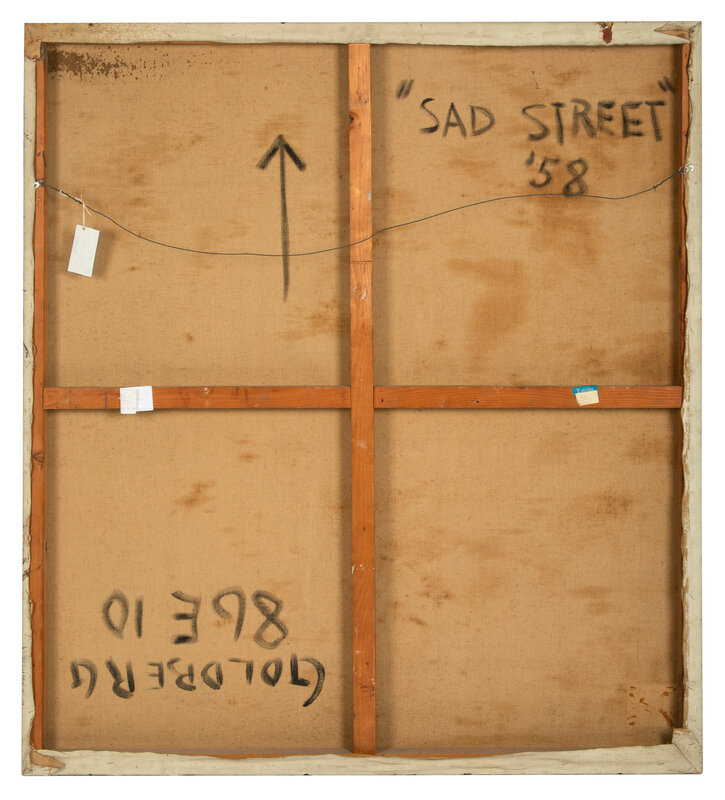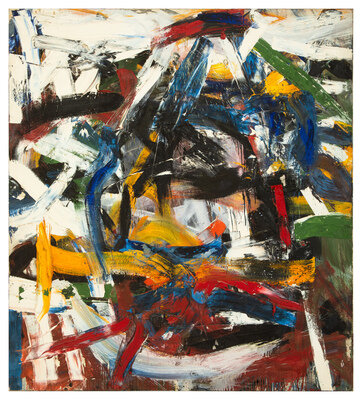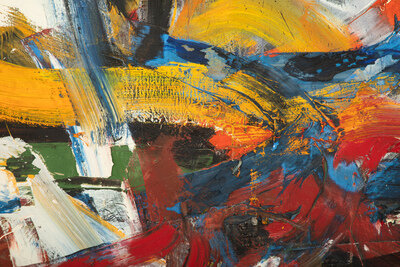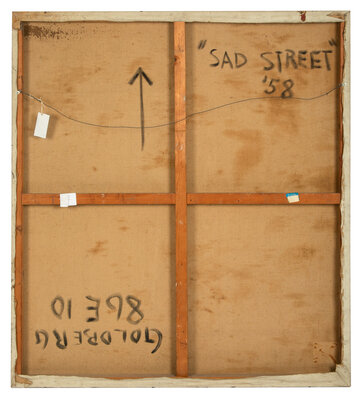Lot 24
Michael Goldberg
(American, 1924-2007)
Sad Street, 1958
Sale 1327 - Post War and Contemporary Art
Apr 24, 2024
10:00AM CT
Live / Chicago
Own a similar item?
Estimate
$100,000 -
150,000
Price Realized
$114,300
Sold prices are inclusive of Buyer’s Premium
Lot Description
Michael Goldberg
(American, 1924-2007)
Sad Street, 1958
oil on canvas
signed Goldberg, titled and dated (verso)
60 x 54 inches.
Provenance:
Poindexter Gallery, New York
Lot Essay:
Goldberg’s Gestural Abstraction
Sad Street (1955) is an expansively abstract work, all thickly applied dynamism and expressive brushwork, a brother to the Smithsonian’s Sardines and a testament to Michael Goldberg’s (American, 1924-2007) vivacious talent. Goldberg’s gestural action paintings would come to be known as the hallmark of his career as he left his mark on the Abstract Expressionist movement.
One of the final alumni of the New York School, Goldberg was born Sylvan Irwin Goldberg in the Bronx, a precocious boy who sailed through his studies and finished high school at 14. He continued his education at the City College and weekend classes at the Art Students League, skipping frequently to visit Harlem’s jazz clubs. Jazz would become a lifelong passion for Goldberg and a formative influence on his compositional approach.
With the Second World War came a near-universal interruption, and Goldberg enlisted in the army to serve in North Africa and the China-Burma-India Theatre. He would become a master sergeant and decorated veteran, receiving a Purple Heart and Bronze Star for his service before he was honorably discharged. The awards were at the cost of his mobility: wounded three times in combat, his arm was partially paralyzed. At the advice of the Veteran’s Association, he began to take stone carving and sculpting classes, which would greatly assist in his rehabilitation and expose him to elements of collage that would later become an integral part of his painting practice. During his recovery, Goldberg began to frequent Cedar Bar, running into a cast of his contemporaries that included Jackson Pollock, Franz Kline, and Mark Rothko, whose studio on the Bowery he would eventually take over.
His public debut came in 1951 with his inclusion in the Ninth Street Show, featured alongside Hans Hofmann, Jackson Pollock, Willem de Kooning, Joan Mitchell, Helen Frankenthaler, and many others. Two years later, his first solo exhibition opened at Tibor de Nagy Gallery. Unemployed and without a bank account, Goldberg has recalled in interviews that, following years of struggle, after one of his first collectors visited his studio and purchased $10,000 worth of work, Goldberg immediately went to purchase an electric blanket and spent the weekend in bed with the cash tucked safely in his arm. Recognition and appreciation for his work rolled in more steadily shortly after and would continue for the rest of his storied career.
Larger-than-life, Goldberg has been memorialized frequently in his friend Frank O’Hara’s poetry as an integral part of the culture of post-war New York--of the bustle, jazz, and artistic discourse that likewise explode in cacophony from Sad Street.
Where is Mike Goldberg? I don’t know,
he may be in the Village far below
or lounging on Tenth Street with the gang
of early-morning painters (before noon)
as they discuss the geste or jest
of action painting, whether it’s Yang
or Yin and related to the sun or moon
Maybe he is living sketches of an ODE
ON SEX which I do not intend to write
in his abode or drinking bourbon in the light
df his be-placticked skylight. I will goad
him into Tibering and hope all’s for the best
(To Richard Miller, from The Collected Poems of Frank O'Hara, 1971, pp. 301)
Condition Report
Contact Information
Auction Specialists
